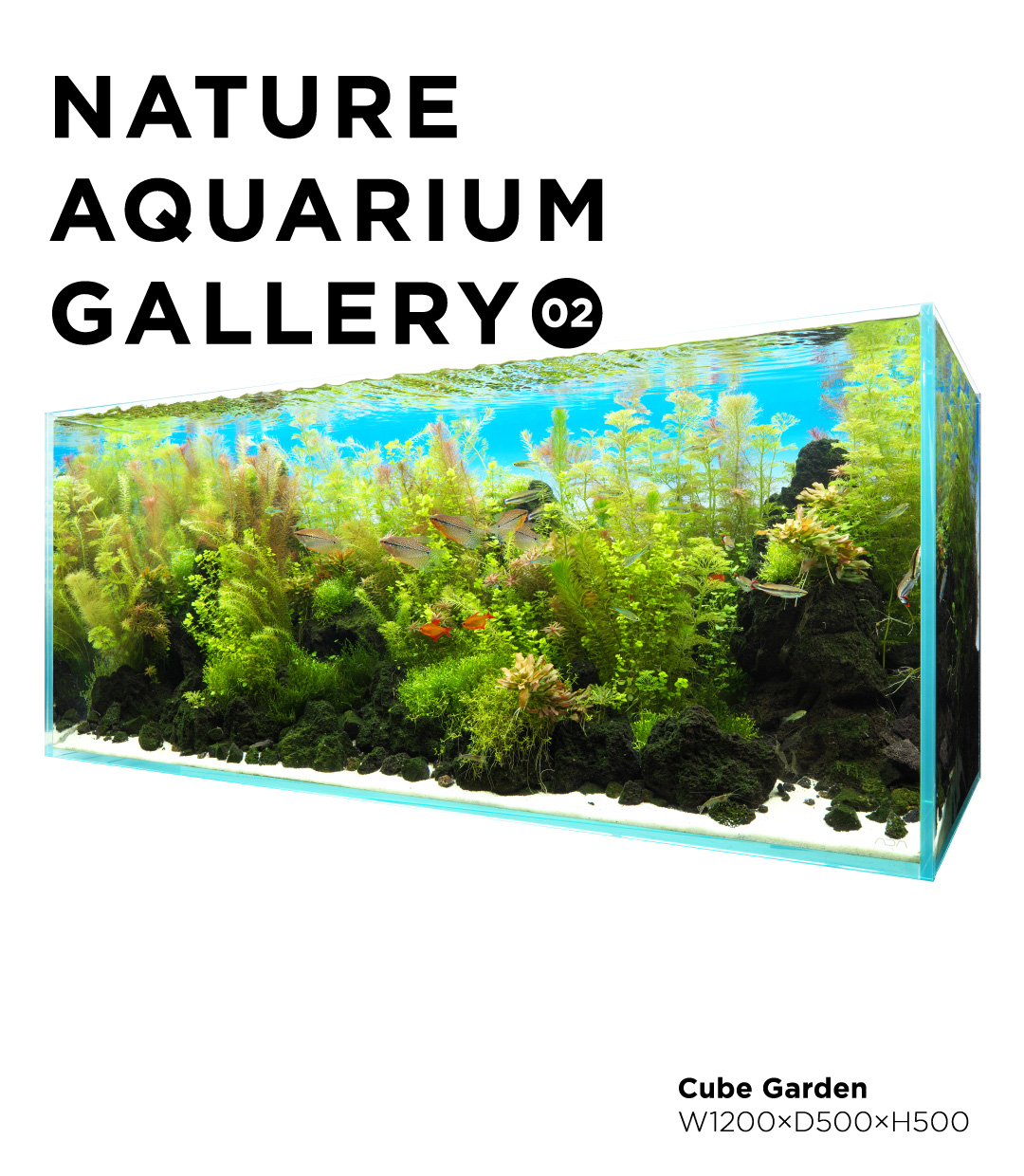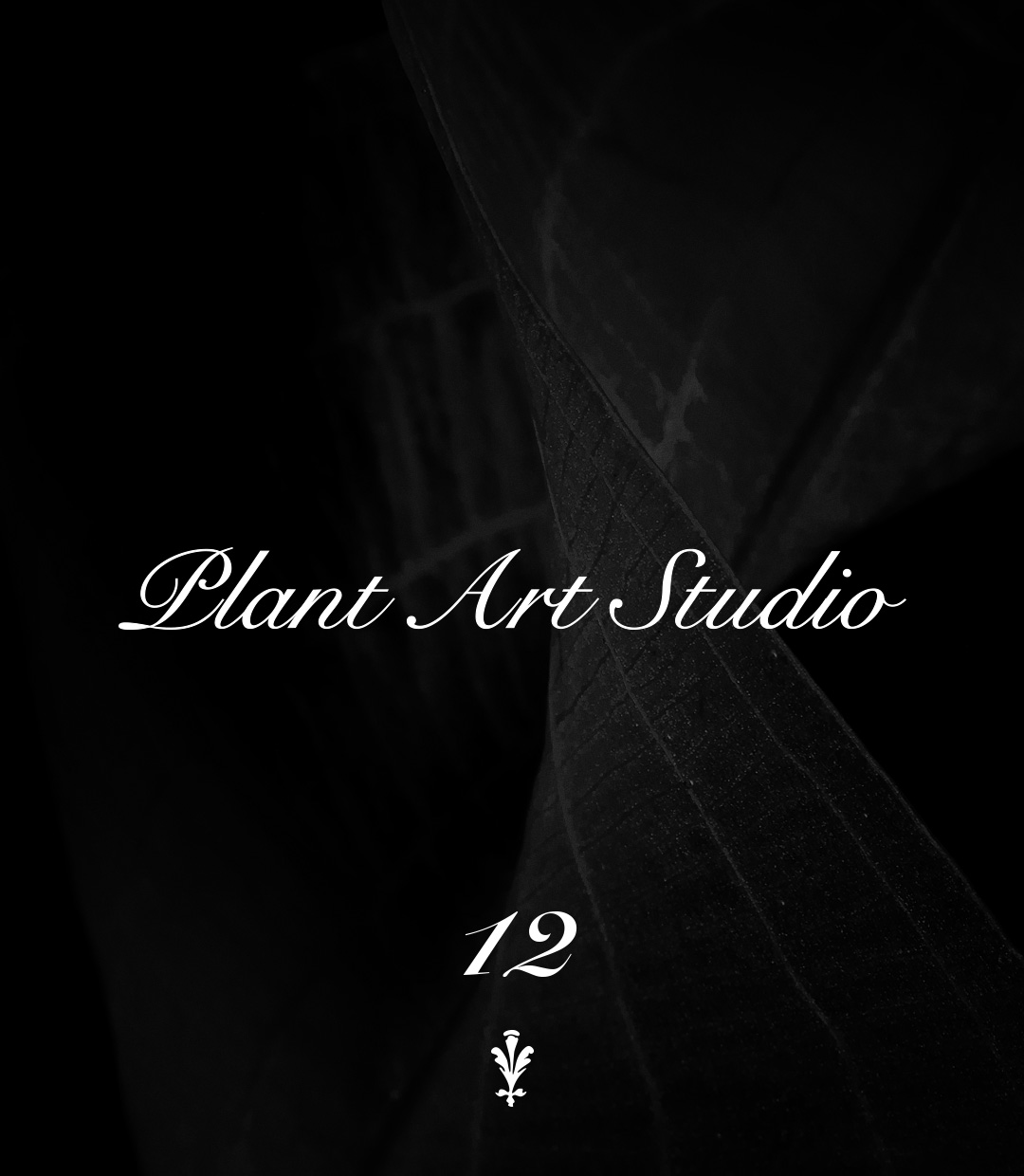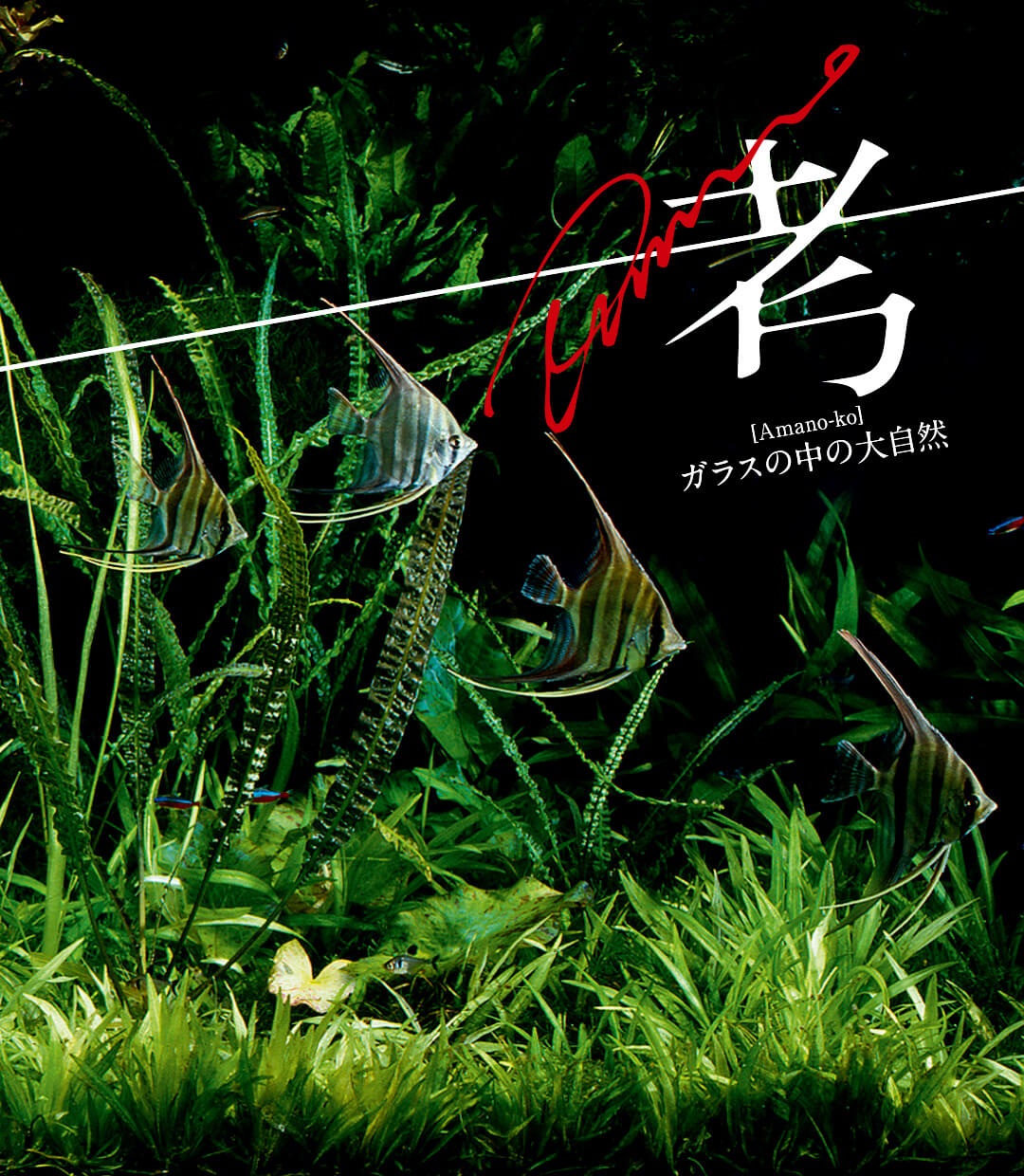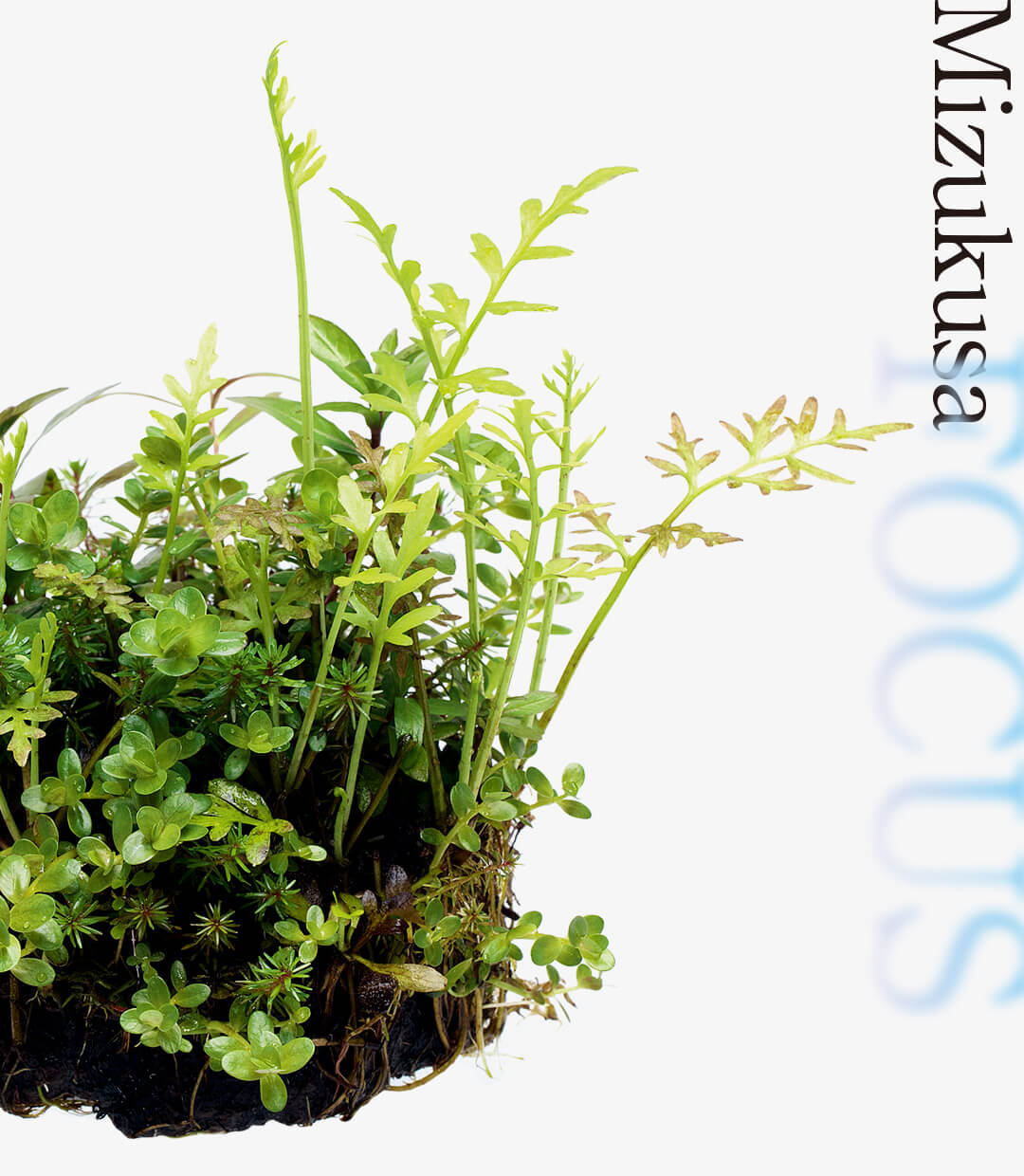Green Lab. #02 [ Karst Climber ]
At Green Lab., we explore paludarium design through practical examples, sharing tips and techniques related to plant care, layout, and the creative process.
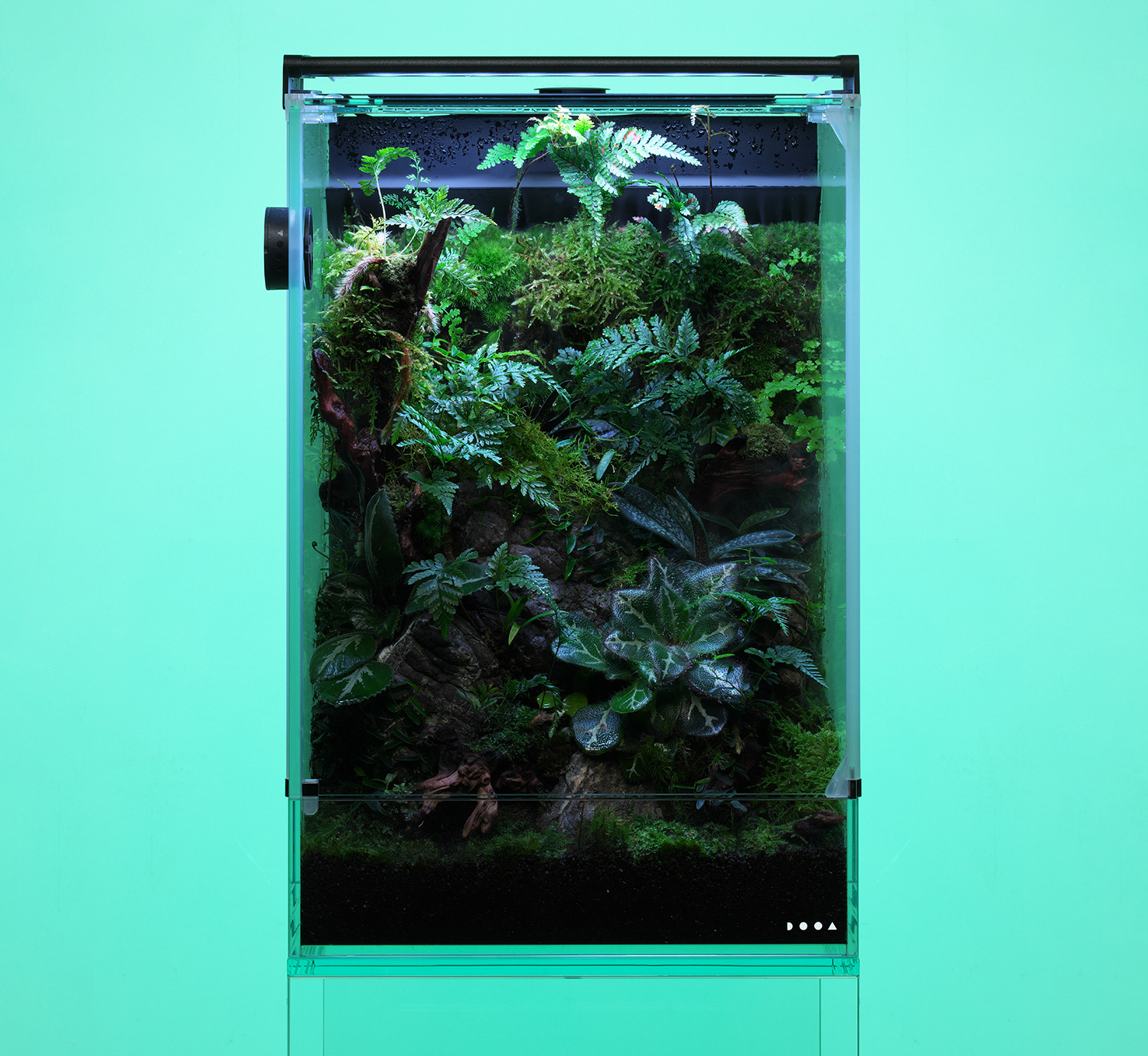
[Karst Climber]
In Southeast Asia, vast stretches of limestone terrain are covered by lush tropical forests. Despite the richness in calcium, these areas are harsh environments for plants. Some species favor the mineral-rich soil, while others adapt by developing tolerance—each finding its own way to survive and thrive. Over time, these unique conditions have given rise to a distinctive and fascinating plant ecosystem.
Inspired by the charm of these specialized plant communities, I set out to create a layout that reflects their beauty. For the hardscape, I chose Ryuoh Stone—a bluish, coarse-textured stone—and arranged it with planting pockets in mind. The layout features iconic plants from limestone regions, including Paphiopedilum and Primulina.
DATA
Photo taken on: May 2, 2025
Creator: Kota Iwahori (ADA SUIKEI CREATOR)
Aquarium: DOOA System Paluda 300
Lighting: DOOA Paluda Light 300 (8 hours per day)
Substrate: DOOA Jungle Soil, DOOA Jungle Base
Water supply: Once every 2-3 weeks via Mistflow Box
Drainage: High absorbent sponge (Once every 2 to 3 weeks)
Humidity control: 20 minutes per hour with Mistflow, 5 minutes per hour with Circulation Fan 40
Time control: Power Code S-70
Plants
Elatostema salvinioides
Primulina sinovietnamica
Primulina sp. ‘Guangxi’
Ficus punctata
Paphiopedilum tigrinum
Paphiopedilum micranthum
Humata tyermannii
Haplopteris ensiformis
In Southeast Asia, vast stretches of limestone terrain are covered by lush tropical forests. Despite the richness in calcium, these areas are harsh environments for plants. Some species favor the mineral-rich soil, while others adapt by developing tolerance—each finding its own way to survive and thrive. Over time, these unique conditions have given rise to a distinctive and fascinating plant ecosystem.
Inspired by the charm of these specialized plant communities, I set out to create a layout that reflects their beauty. For the hardscape, I chose Ryuoh Stone—a bluish, coarse-textured stone—and arranged it with planting pockets in mind. The layout features iconic plants from limestone regions, including Paphiopedilum and Primulina.
DATA
Photo taken on: May 2, 2025
Creator: Kota Iwahori (ADA SUIKEI CREATOR)
Aquarium: DOOA System Paluda 300
Lighting: DOOA Paluda Light 300 (8 hours per day)
Substrate: DOOA Jungle Soil, DOOA Jungle Base
Water supply: Once every 2-3 weeks via Mistflow Box
Drainage: High absorbent sponge (Once every 2 to 3 weeks)
Humidity control: 20 minutes per hour with Mistflow, 5 minutes per hour with Circulation Fan 40
Time control: Power Code S-70
Plants
Elatostema salvinioides
Primulina sinovietnamica
Primulina sp. ‘Guangxi’
Ficus punctata
Paphiopedilum tigrinum
Paphiopedilum micranthum
Humata tyermannii
Haplopteris ensiformis
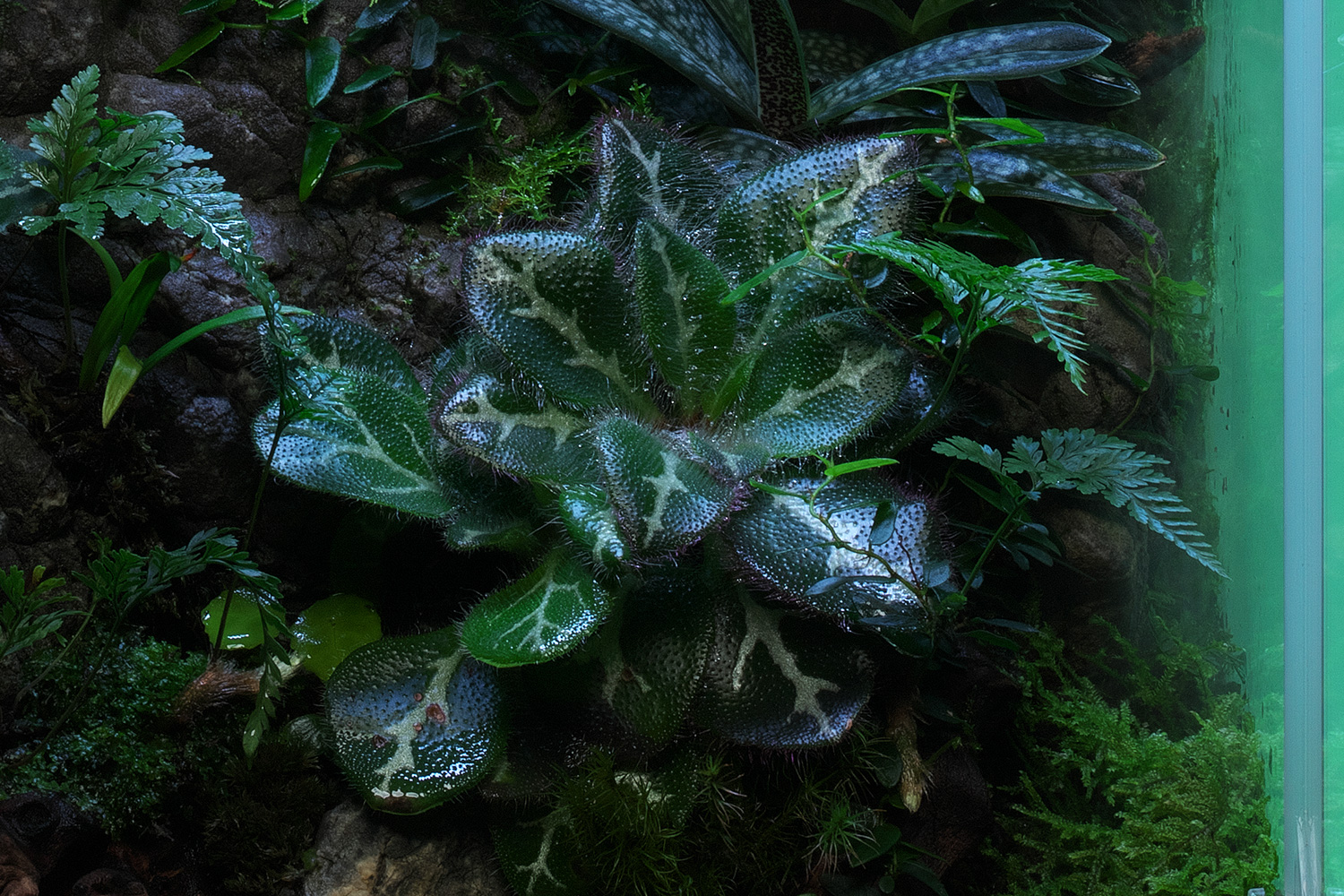
Primulina sinovietnamica
Native to the limestone zones of southeastern China, this member of the Gesneriaceae family is known for its finely haired leaves with delicate patterns. In this layout, the delicate rosette form decorates the rocky surface. Jungle Soil was poured into the crevices of the stone, and the roots were covered in sphagnum moss.
Native to the limestone zones of southeastern China, this member of the Gesneriaceae family is known for its finely haired leaves with delicate patterns. In this layout, the delicate rosette form decorates the rocky surface. Jungle Soil was poured into the crevices of the stone, and the roots were covered in sphagnum moss.
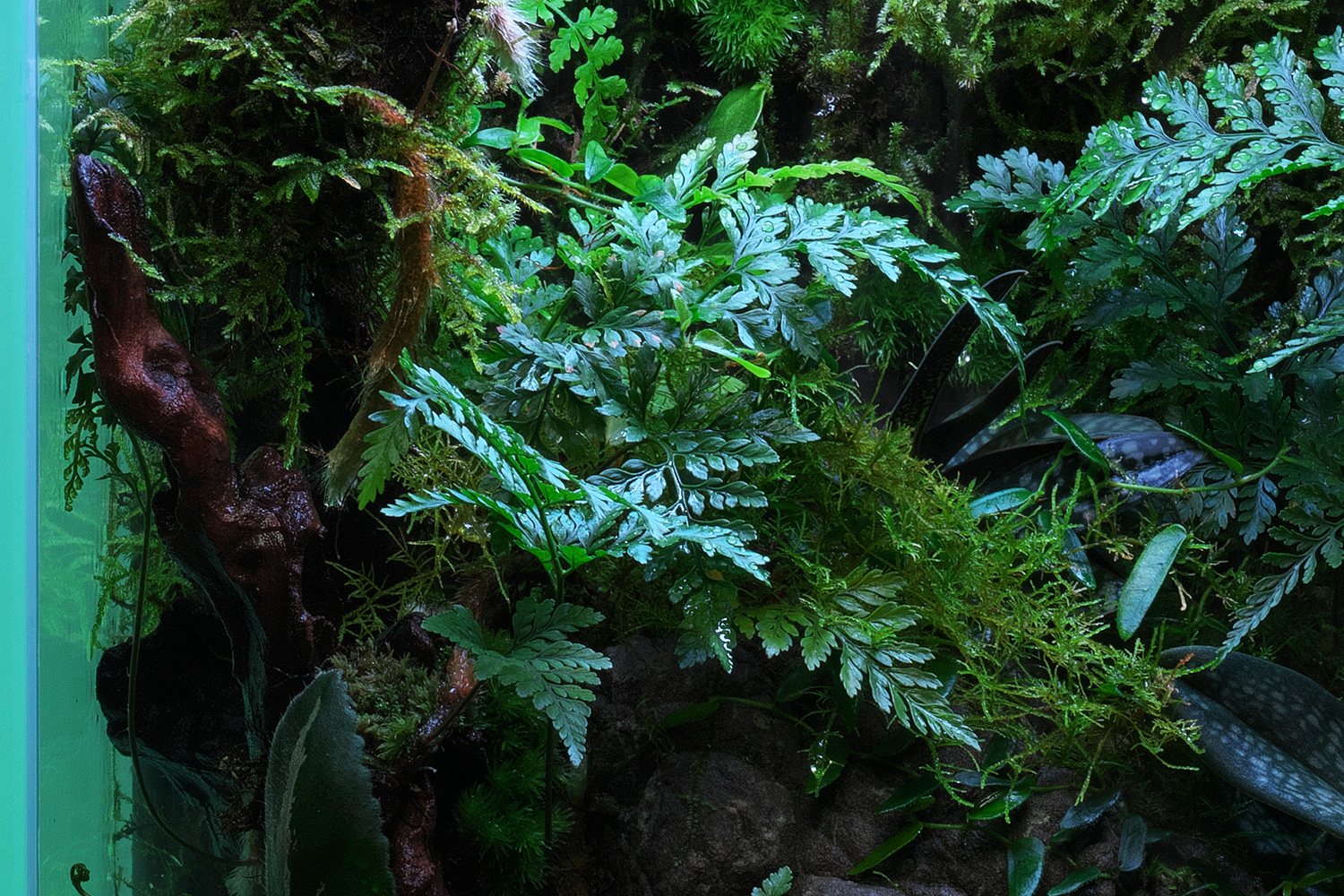
Humata tyermannii
In paludariums, the tips of driftwood branches tend to dry out, making plant selection difficult. Humata tyermannii, with its strong ability to anchor and relative resistance to dryness, is well-suited for such areas. It grows slowly and gradually wraps itself around the layout materials.
In paludariums, the tips of driftwood branches tend to dry out, making plant selection difficult. Humata tyermannii, with its strong ability to anchor and relative resistance to dryness, is well-suited for such areas. It grows slowly and gradually wraps itself around the layout materials.
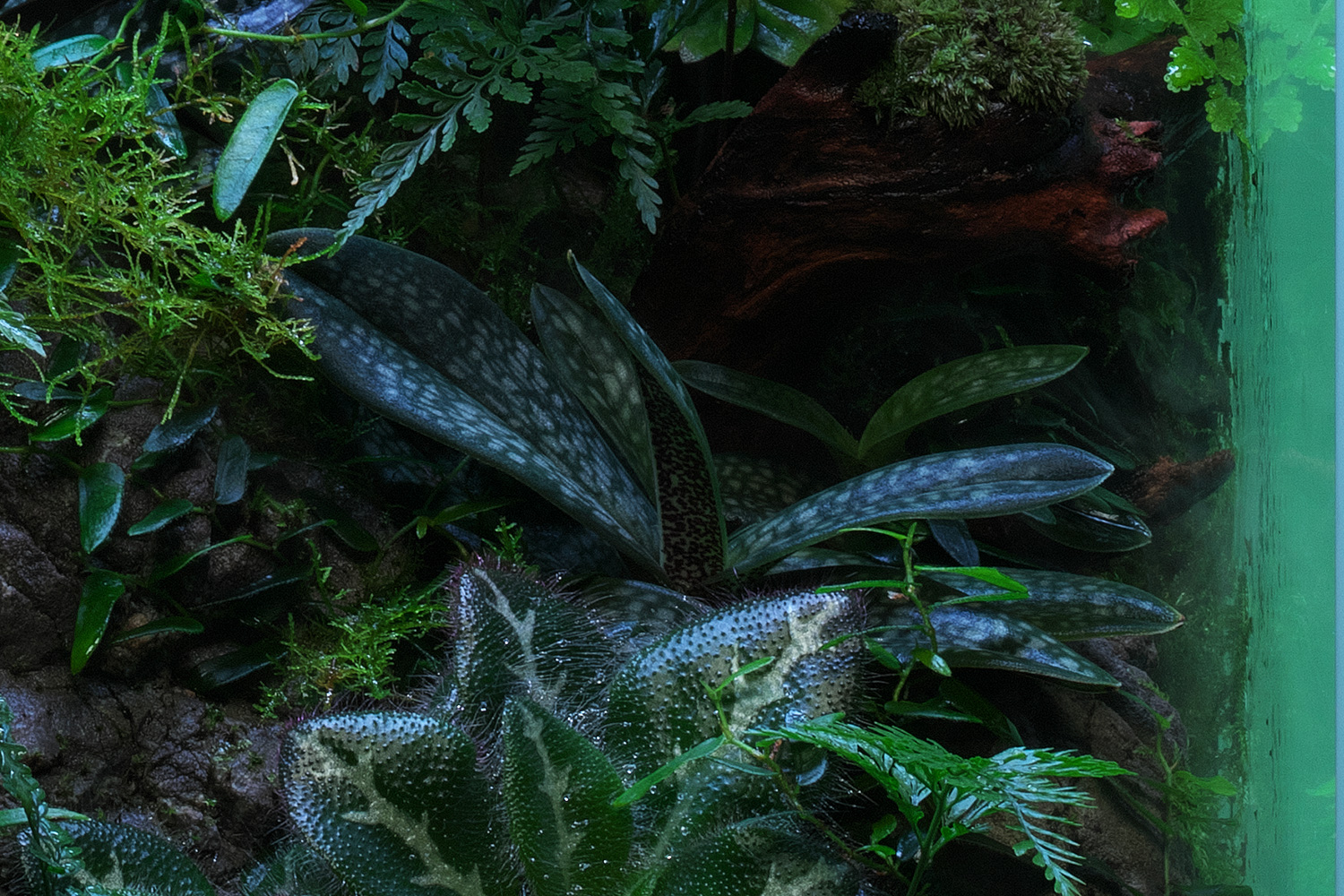
Paphiopedilum micranthum
Paphiopedilum orchids are prized for their unique flowers, which feature pouch-like petals. But many varieties also have stunning leaf patterns, such as netted or marbled designs. Several species grow naturally in karst landscapes, making them perfect for this kind of composition.
Paphiopedilum orchids are prized for their unique flowers, which feature pouch-like petals. But many varieties also have stunning leaf patterns, such as netted or marbled designs. Several species grow naturally in karst landscapes, making them perfect for this kind of composition.
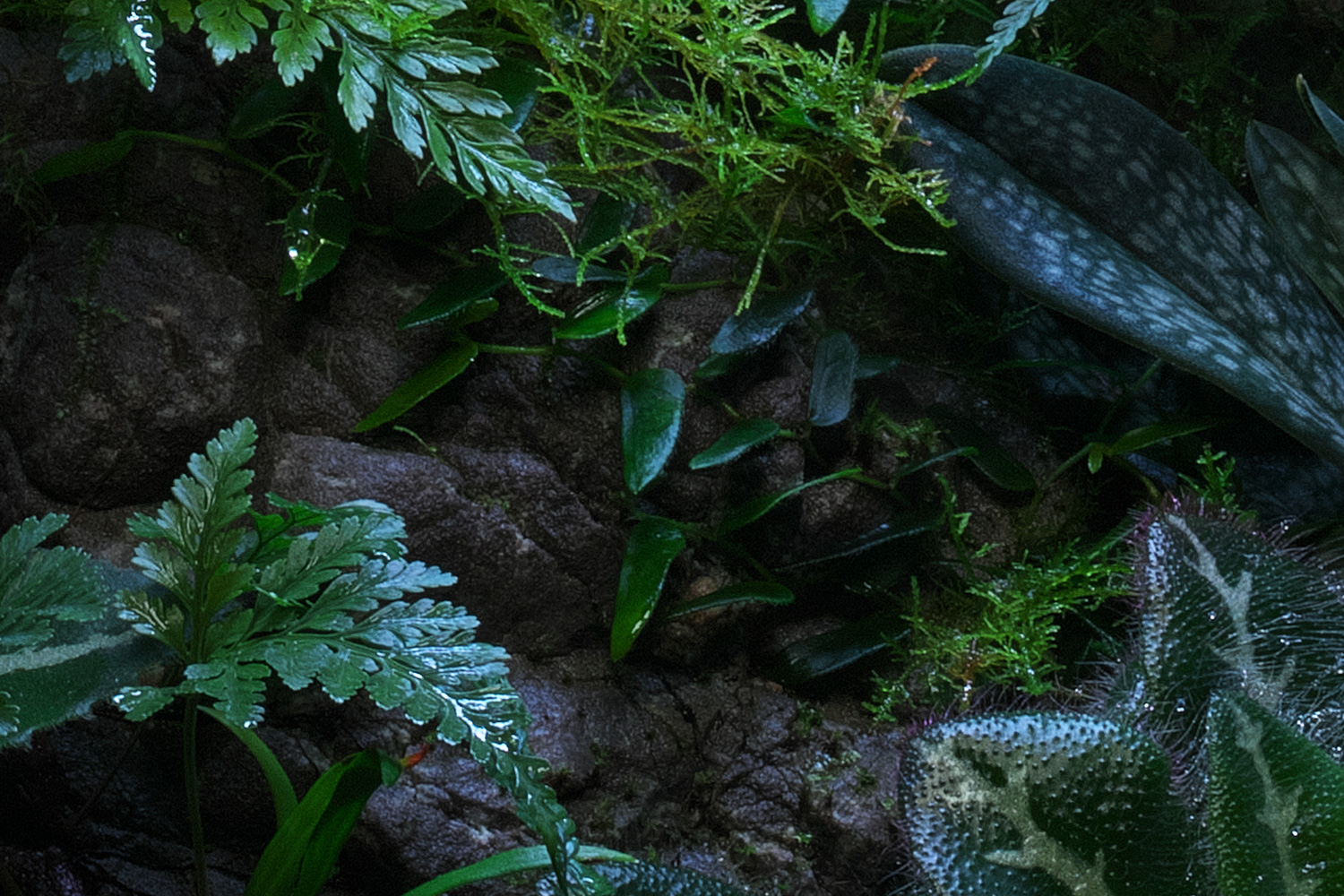
Ficus punctata
Ficus punctata, with its leaves shaped like insect wings, is a climber plant that grows upward when planted near layout materials. In this setup, it was positioned to trail along the rock surfaces, partially concealing them and spreading onto driftwood and wall surfaces.
Ficus punctata, with its leaves shaped like insect wings, is a climber plant that grows upward when planted near layout materials. In this setup, it was positioned to trail along the rock surfaces, partially concealing them and spreading onto driftwood and wall surfaces.
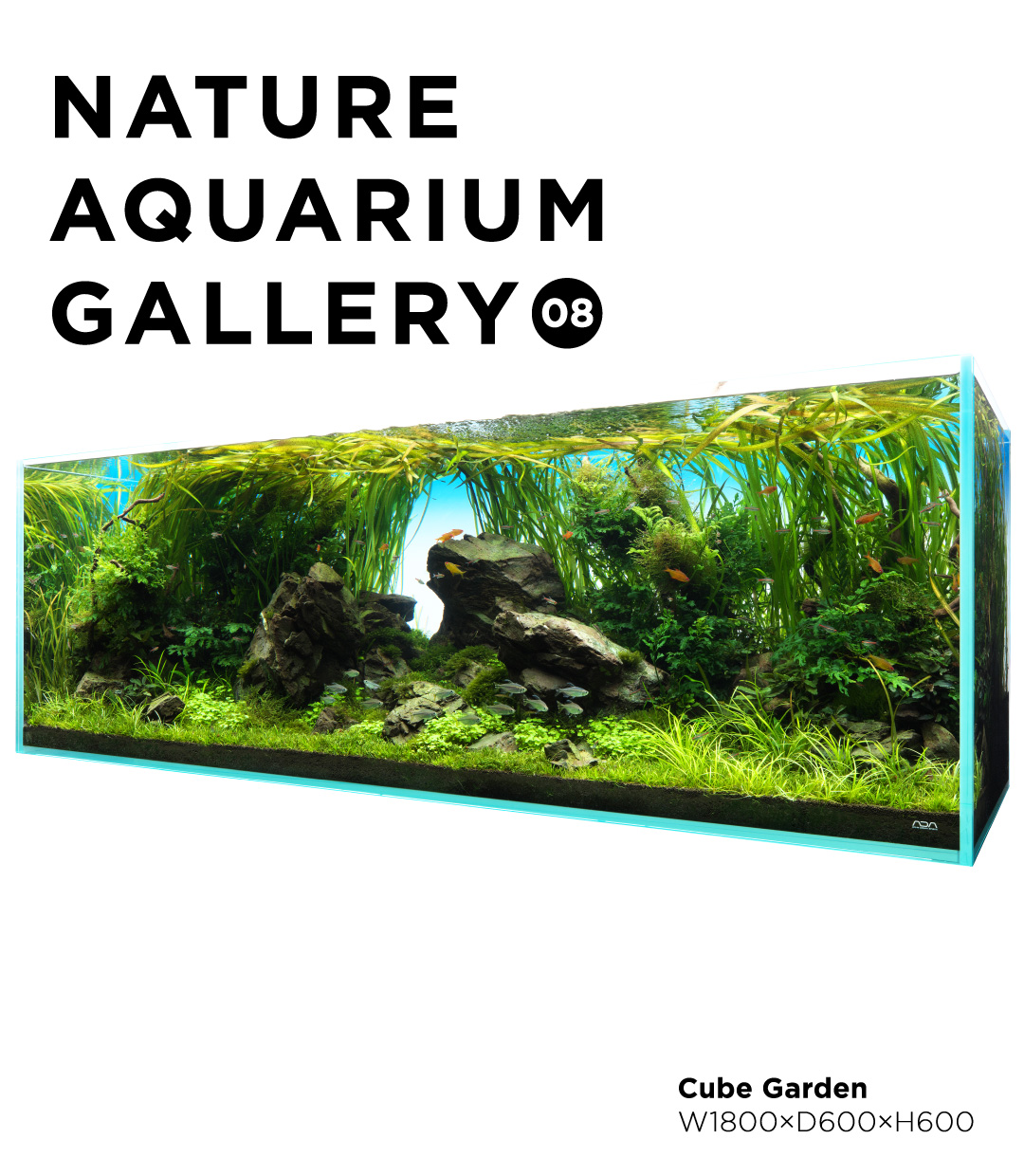
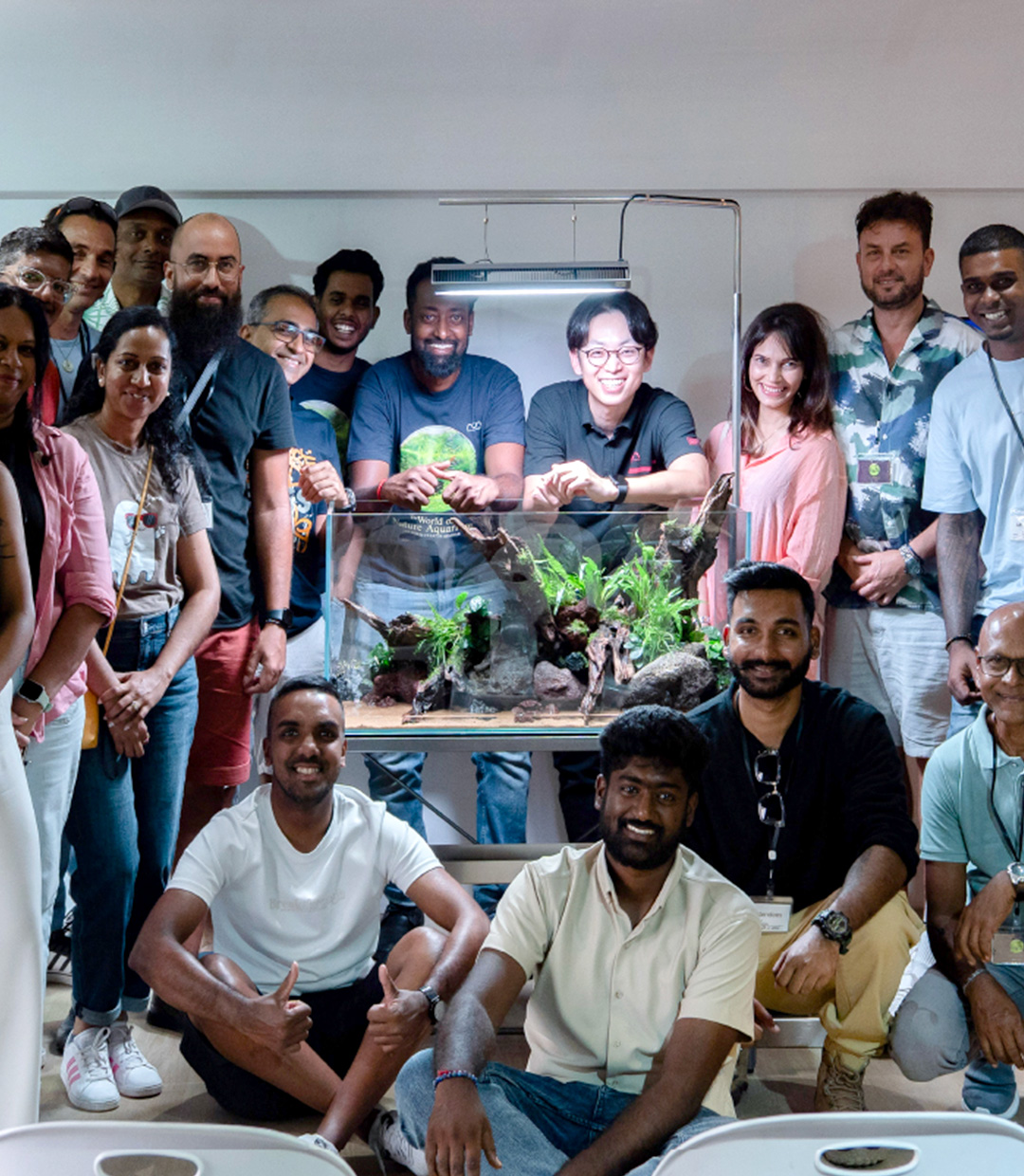
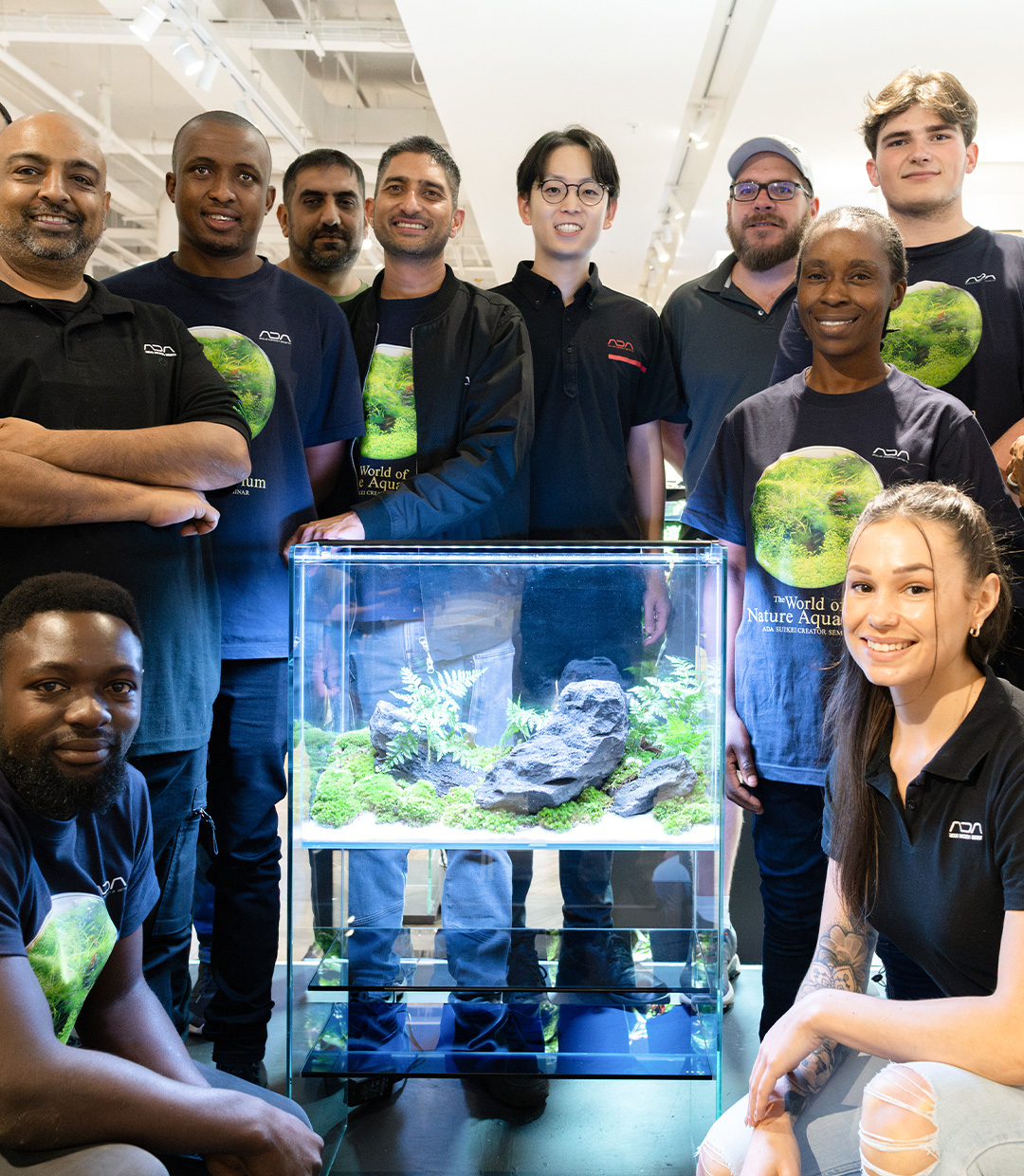
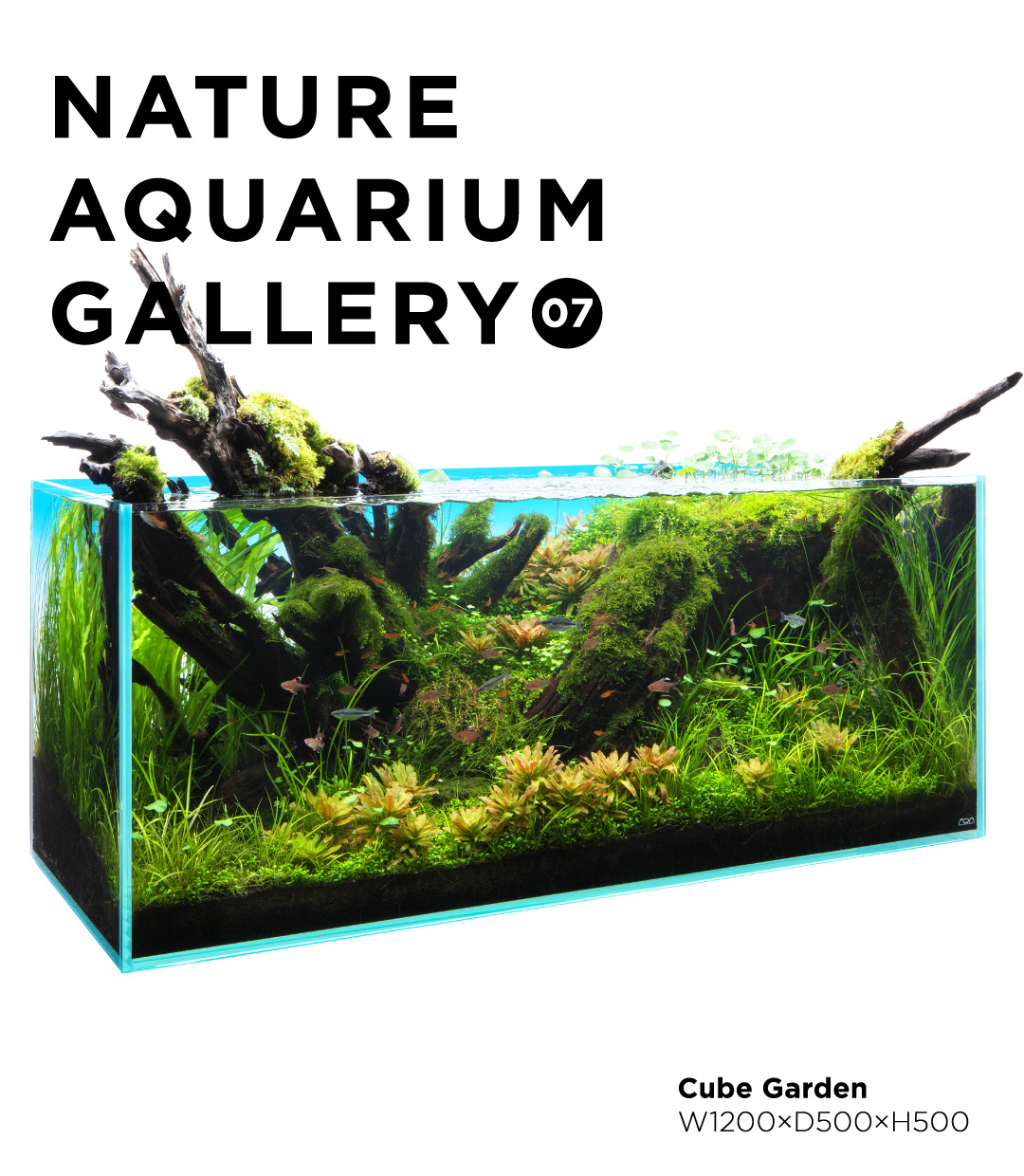
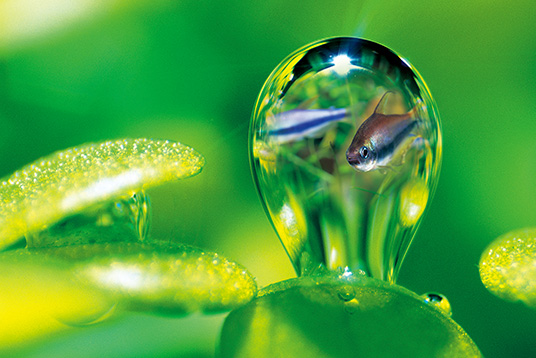
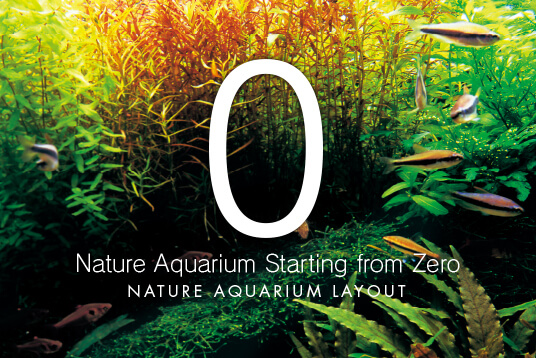
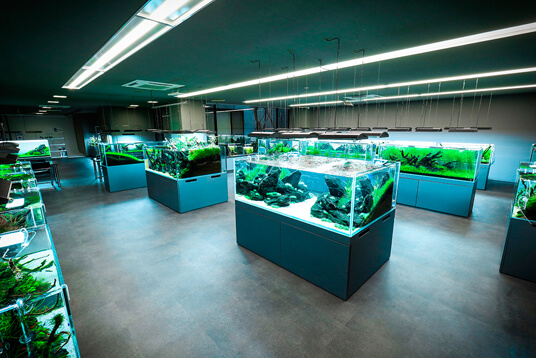

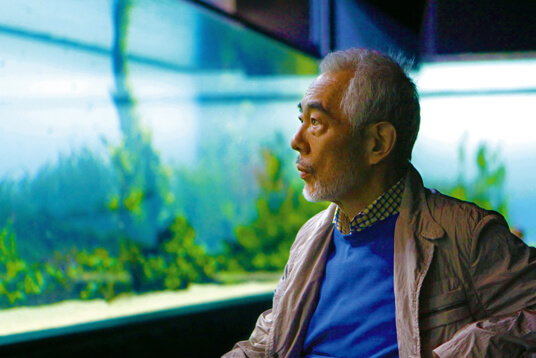

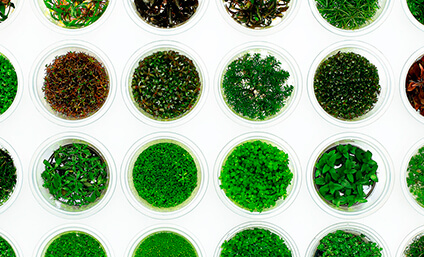
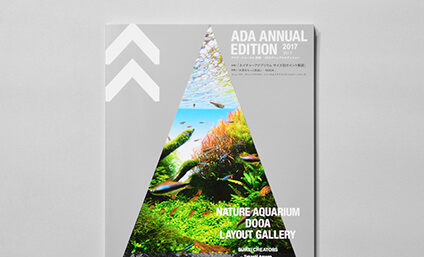
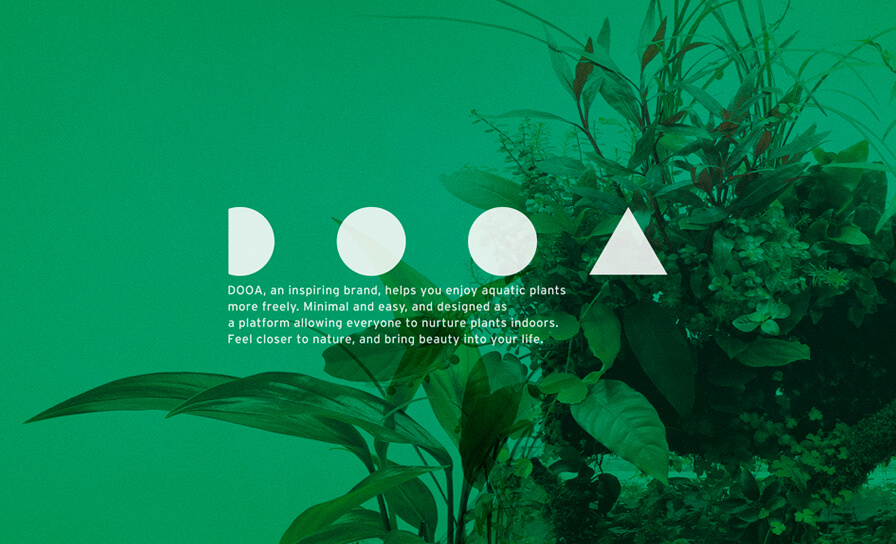





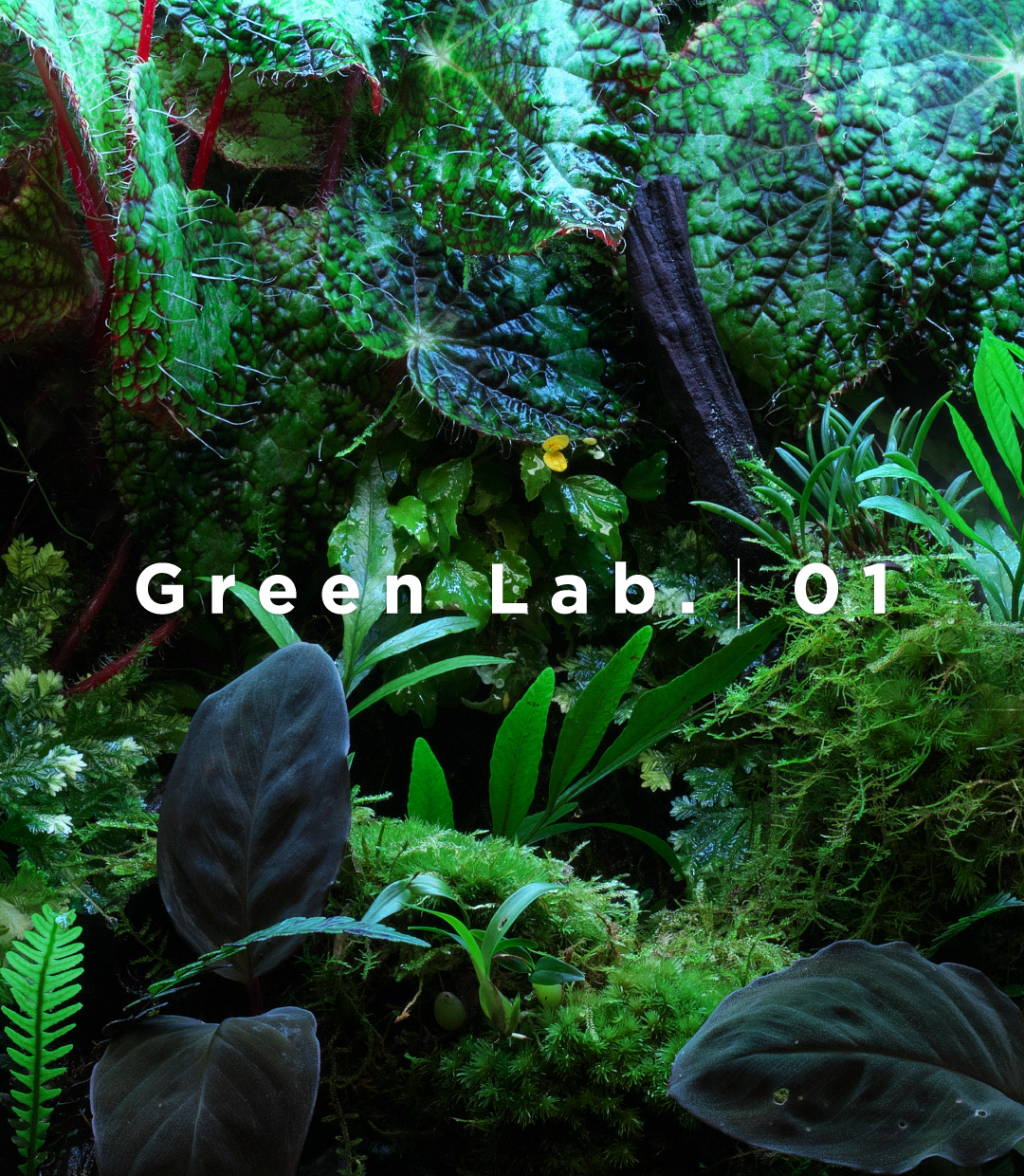
![Green Lab. #02 [ Karst Climber ]](https://www.adana.co.jp/wp-content/uploads/sites/3/2025/07/gl02_img_ogp.jpg)
![Green Lab. #03 [Perched on an Aged Branch]](https://www.adana.co.jp/wp-content/uploads/sites/3/2025/08/gl03_img_ogp.jpg)
![Green Lab. #04 [Until We Thrive Again]](https://www.adana.co.jp/wp-content/uploads/sites/3/2025/09/gl04_img_ogp.jpg)
![Green Lab. #05 [Jewels of the Forest Floor]](https://www.adana.co.jp/wp-content/uploads/sites/3/2025/10/gl05_img_ogp.jpg)
